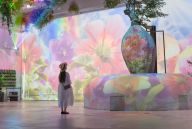Celebrate New Year in Japan–From the Comfort of Your Home
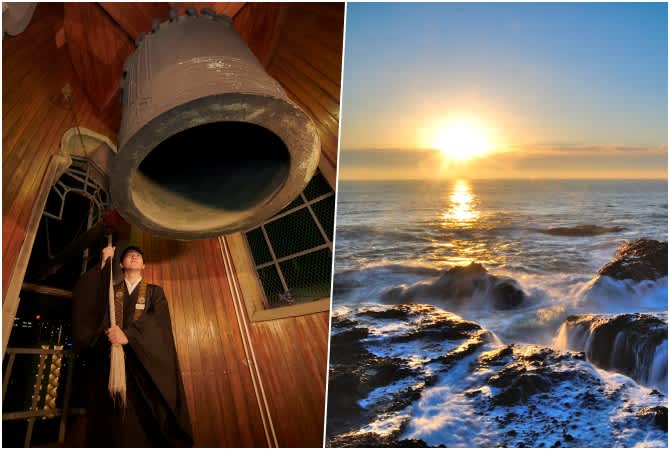
In Japan, the year-end and New Year holidays are some of the biggest events of the year. Ōmisoka (New Year's Eve), toshikoshi (year-crossing), hatsuhinode (first sunrise of the year), and hatsumōde (the first worship of the year) are some of the many customs unique to welcoming the new year in Japan.

Thanks to technological advances and the popularization of virtual experiences, you can now participate in Japanese new year celebrations through your device and have a feel of what it is like—all from the comfort of your own home. Our local staff takes you on a virtual tour of Tokyo, through all the important Japanese new year traditions from December 31 to January 1!
So if you are ready, go on board an imaginary trip to Tokyo, Japan, to experience these unique New Year customs!
1st Stop: New Year’s Countdown at Tsukiji Hongwanji
(December 31, 11 p.m.) Reflect on the past year to the sound of the New Year’s Eve Bell

On New Year’s Eve or Ōmisoka, many temples strike their bells 107 times over the course of the night, and then once more as the clock hits midnight, for a total of 108 times. Each sound of the bell represents the 108 worldly desires throughout one’s life.
This Japanese new year tradition is actually a ritual in Japanese Buddhism, in which the sound of the Joya no Kane or the New Year’s Eve Bell reminds people to think back and be thankful for the blessings of the past year.

Our tour starts at Tsukiji Hongwanji in Tokyo. Every year on December 31 at 11 p.m., the temple holds a Buddhist service called Joya-e to let people remember the happenings of the year, ponder on what may come in the year ahead, and rejoice in Buddha's blessings.
With the main building lit up nice and bright, the normally quiet temple turns lively with excited visitors. The place is bustling with numerous stalls selling candle arts, amazake (a Japanese sweet beverage), rice crackers, and more.
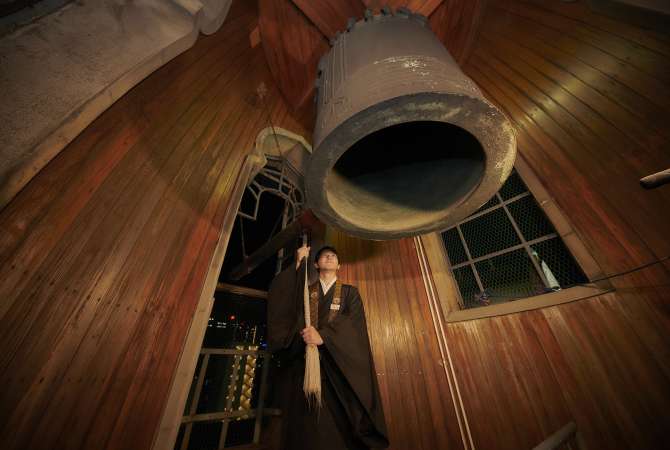
If you want to try striking the New Year’s Eve Bell, be sure to get a ticket in advance. There is a limit to the number of participants and it is on a first-come, first-served basis. But no need to be upset even if you miss out, as the shrine gives each visitor a firecracker for a different yet equally joyous practice. Once the clock hits midnight, people are invited to light them up together to mark the start of the new year as jolly cheers and laughter fill the air.

※The description above is based on experiences prior to the pandemic. It may be different now or in the future due to the implementation of COVID-19 measures. Please visit the Tsukiji Hongwanji website for details. You can also watch some of the ritual services that were livestreamed on their official YouTube channel.
Facility Information
|
Location: 3 Chome-15-1 Tsukiji, Chuo Ward, Tokyo |
2nd Stop: Hatsumōde at the Sakura Jingū
(Jan 1, 2 a.m.) Practice new year worship virtually
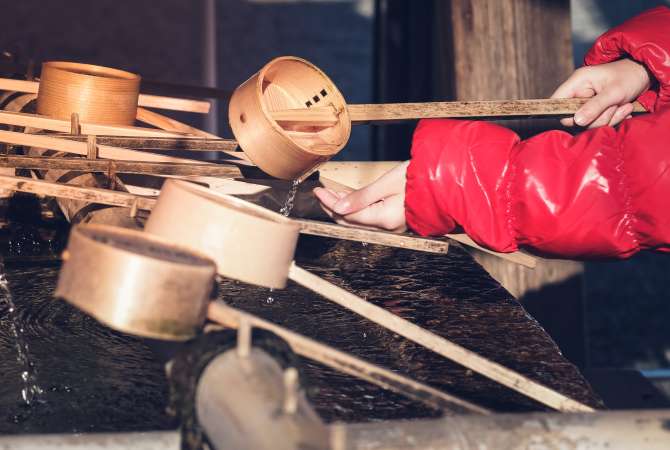
Imagine that it’s 2 a.m. It’s way past your usual bedtime, but the night of the new year in Japan has just begun! First thing after ushering in the new year: Visit a shrine or temple for Hatsumōde (the first worship of the year) to wish for a peaceful year ahead. During their visit, people usually give a small monetary offering called Osaisen as a token of gratitude to the kami (deities) or the Buddha when making a wish.
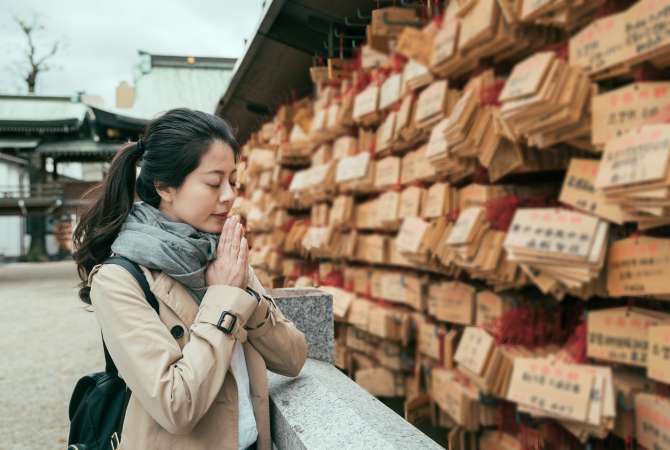
Or, you can write your wish down on an ema, a wooden plaque tablet and hang it up in the shrine. You’re free to write whatever your heart desires. Students usually ask for better grades while some ladies might ask for a fateful romantic encounter. Meanwhile, expecting mothers often pray for a smooth and healthy pregnancy, and so on.
Recently, an increasing number of shrines and temples have also started virtual tours and online Hatsumōde in a bid to minimize infection risks and observe social distancing due to COVID-19. Some even allow purchasing Omikuji (written oracle) and Omamori (Japanese amulets) on their websites, although most of them are only available within Japan.

Up until the pandemic, going for Hatsumōde right after the New Year countdown has always been an important Japanese New Year tradition for the locals. If you are nervous about the crowds while you are in Japan or want to experience Japanese culture from Malaysia, then practicing Yōhai is your option. Translating to “praying from afar,” it is when people who cannot travel to the shrine pray remotely while facing in its general direction, instead of standing in person directly in front of the kami or Buddha.

Sakura Jingū in Tokyo is one of the shrines that allows online Hatsumōde. Go to its official website and click on “Virtual Yōhai (インターネット遥拝)” to start. Follow the instructions and it will guide you through the whole process:
|
Access “Virtual Visit” of Sakura Jingū (Only Japanese)
→ Write and hand in your Ema (絵馬掛け:絵馬奉納)
→ Receive a digital Japanese amulet at Juyojo (授与所:御守授与) |
When drawing the omikuji, choose your birth month and the website will reveal your fortune as foreseen by the priests. The written oracle covers health, romantic relationships, travel, finances, and more.
For the digital ema, type down your name and wish before hitting “Confirm (確認).” The ema will be sent to the shrine priests for further rituals.
The digital amulets have also been prayed on by the priests, so you won’t miss out on blessings even though you visit online. Simply download them to your device or print them out to carry around. Getting blessings from Japanese shrines has never been easier!
Facility Information
|
Name: Sakura Jingū |
3rd Stop: Hatsuhinode at The Tokyo Metropolitan Government Observatory
(Jan 1, 7 a.m.) Wake up early for a hatsuhinode live stream

In Japan, the sunrise every January 1 is said to bring good luck to those who see it. That is why many people are willing to wake up early to secure a good view of the first sunrise of the year. With the sprawling cityscape and iconic skyline, Tokyo’s sunrise is unlike any other, making your hatsuhinode quite an amazing experience!
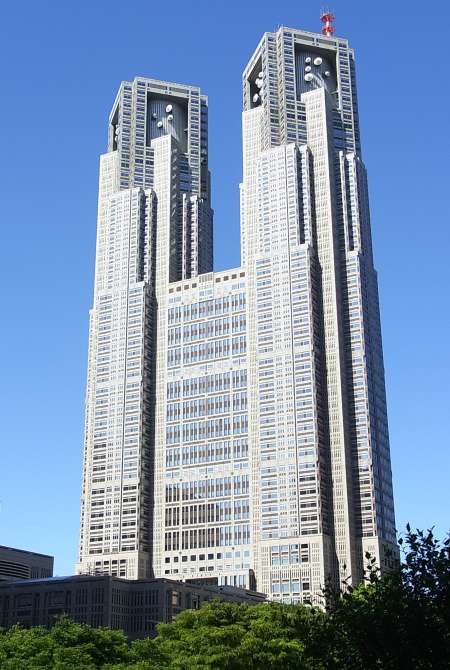
The Observatory on the 45th floor of the Tokyo Metropolitan Government Building is already famous for its panoramic view of the city from 202 meters above ground. However, its free admission makes the location even more popular. Before the pandemic, the South Observatory used to open for New Year’s at special business hours from 5:30 a.m. to 7:30 a.m. to accommodate people hoping to see the first sunrise. The observatory only allowed 600 people, and thoses granted admission were determined by lottery.
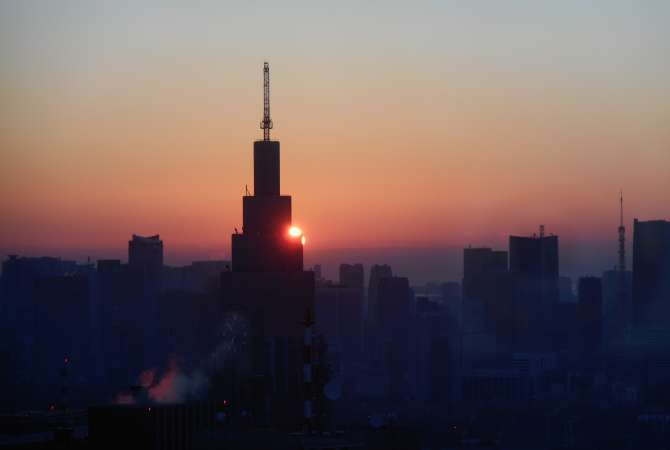
Following a reopening in November 2021, the observatories of the Tokyo Metropolitan Government Building closed again on January 11, 2022, to prevent the spread of COVID-19. Revelers, however, were able to observe Hatsuhinode 2022 via livestream on YouTube. The 44-minute video showed how the city of Tokyo gradually lit up under the first morning rays of the year!
Facility Information
|
Location: Tokyo Metropolitan Government Building Main Building No.1, 2 Chome-8-1, Nishishinjuku, Shinjuku Ward, Tokyo 09:30 - 22:00 for the South Observatory, last entry 30 minutes before closing. Closed: The 1st and 3rd Tuesday for the South Observatory (the following day if it is a holiday), the 2nd and 4th Monday for the North Observatory (the following day if it is a holiday), Maintenance Day of the Main Building |
Bonus stop: Hatsuhinode at Oarai Coast (Ibaraki)
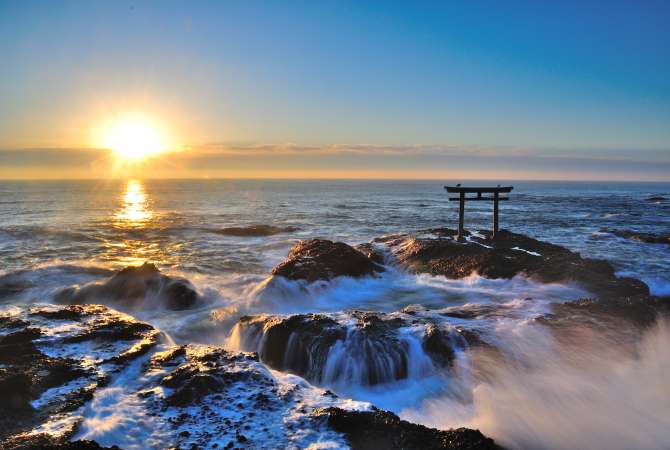
If you prefer the calming waves of the sea over the bustling cityscape, you can also choose to greet the sunrise in this famous Hatsuhinode spot just a little further out from Tokyo. Located in Ibaraki is the Kamiiso no Torii, a stone torii (traditional Japanese gate found at the entrance of a Shinto shrine) built atop a rock on the Oarai Coast.
The torii is part of the historic Oarai Isosaki Shrine that sits on top of a hill on the Pacific coastline facing east. With the right weather conditions, you might be able to capture the moment when the sun rises directly behind the torii. Simply align your position with the torii and wait for the magical moment when it frames the rising sun perfectly!
To end your virtual experience of Japanese new year traditions, watch this viral livestream from 2021 that nudged this spot into the spotlight.
The viral live stream from 2021 that nudged this spot into the spotlight
Spot Information
|
Name: Oarai Coast |
※The information above is up-to-date as of the day this article is written. Please check the official website for the latest information.
Your Bucket List:
Ways to celebrate New Year in Japan like a local!
From shrines to shops! 3 sightseeing spots to hit up in Tokyo during the New Year holiday















































